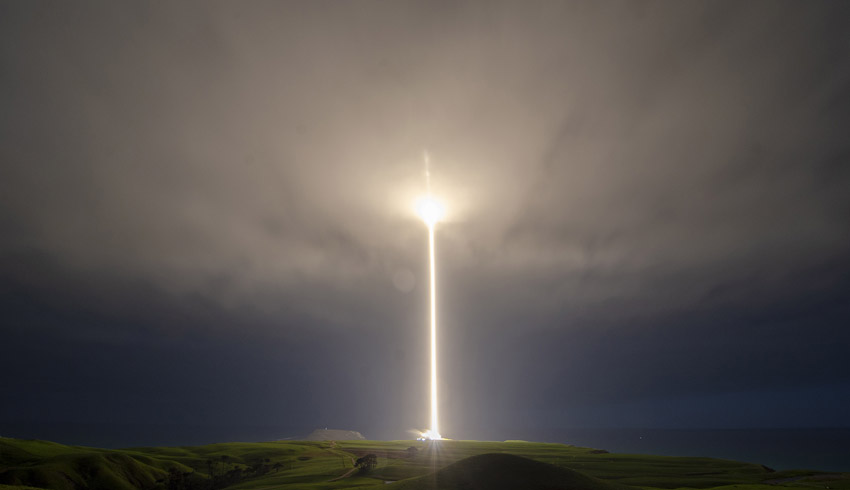That’s the Northrop Grumman Mission Extension Vehicle (MEV-1), which will attach itself to the near two-decade old Intelsat-901 and extend its life for another five years.
Intelsat-901 was launched in 2001 to provide communications services for Europe and remains fully functional, though its onboard fuel is exhausted.
The 2.3-tonne MEV-1 will physically attach to the satellite, using its onboard fuel for maintaining station and attitude, for a contracted five years.
Should the satellite remain functional and useful at the end of that period, Intelsat could choose to extend the contract. Otherwise MEV-1 will detach and move to another satellite whose operator wants its operational life extended.
Also aboard the Proton launch was the Eutelsat-5 West B communications satellite, also built by Northrop Grumman.
The MEV is a pioneering concept in space logistics. Various schemes for satellite life extension are now in development but MEV-1 will be the first.
Although this hasn’t yet been proven in space, Intelsat was sufficiently confident that it contracted for MEV-2 to extend the life of a second satellite.
Expensive communications and Earth observation satellites in geostationary orbit have a finite life of around 15 years dependent on onboard fuel capacity. Once that fuel runs out, the satellite is retired to the so-called graveyard orbit, even though it may be fully functional.
Current satellites were never designed to be refuelled in orbit. That may eventually occur but the MEV approach is to dock with the satellite and provide all station keeping services.
MEV-1 is expected to take up to three-and-a-half months to reach geostationary orbit using its electric propulsion. Once connected to Intelsat-901, there will be a period of testing.
Intelsat chief executive Stephen Spengler told the Satellite Innovation conference in the US that the company saw value in keeping satellites running beyond their design life while they were continuing to generate revenue.
“If those customers are happy with what we’re doing on the current generation and don’t need to move to high-throughput capabilities immediately, it’s an opportunity to extend them,” he said.
The other benefit is that it can allow spending on new satellites to be deferred for investment in the latest technology, he said.
Intelsat hasn’t yet said which of its satellites will have its life extended by MEV-2.

